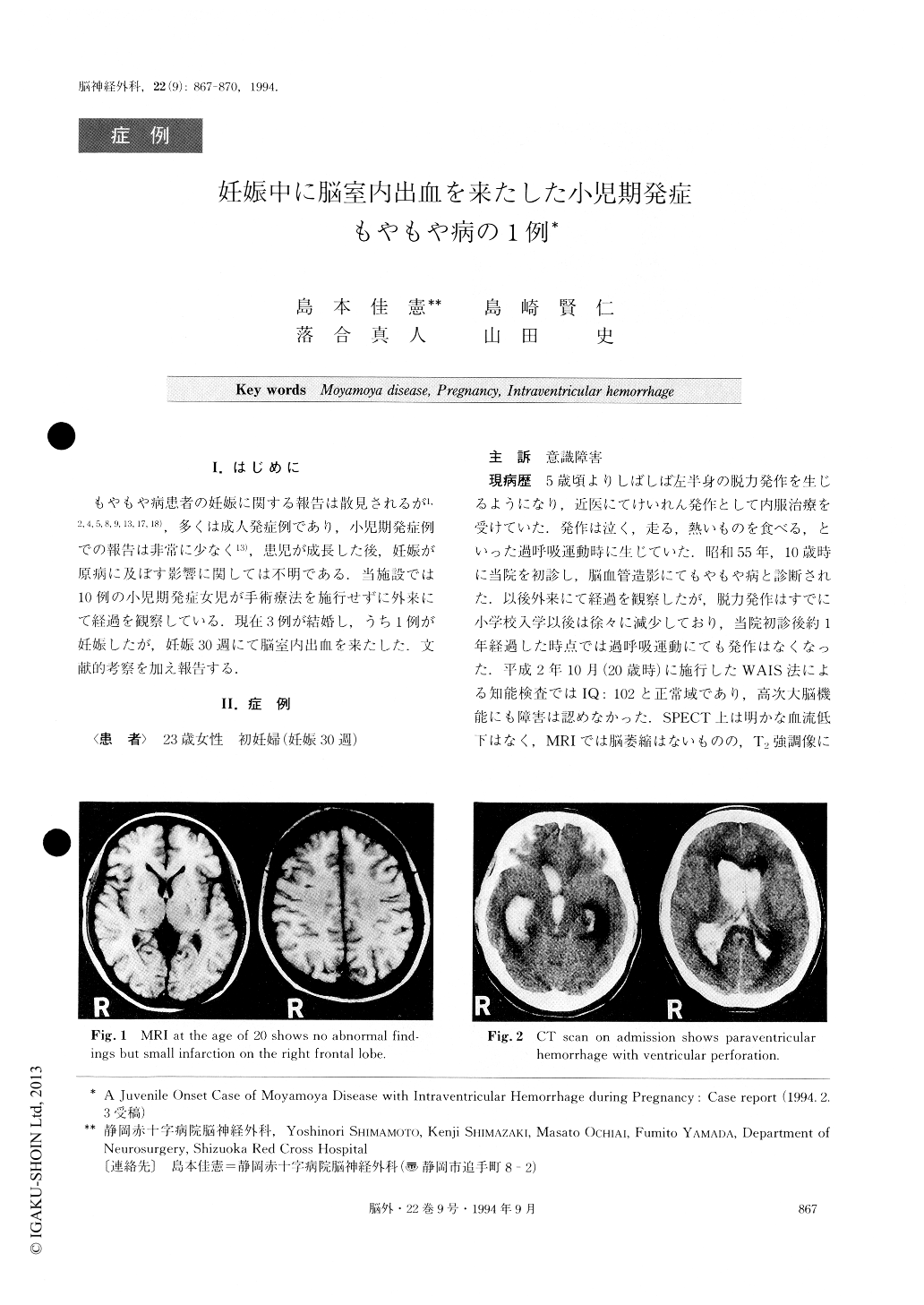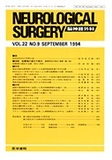Japanese
English
- 有料閲覧
- Abstract 文献概要
- 1ページ目 Look Inside
I.はじめに
もやもや病患者の妊娠に関する報告は散見されるが1,2,4,5,8,9,13,17,18),多くは成人発症例であり,小児期発症例での報告は非常に少なく13),患児が成長した後,妊娠が原病に及ぼす影響に関しては不明である.当施設では10例の小児期発症女児が手術療法を施行せずに外来にて経過を観察している.現在3例が結婚し,うち1例が妊娠したが,妊娠30週にて脳室内出血を来たした.文献的考察を加え報告する.
We report a primipara with intracranial bleeding dur-ing pregnancy. The patient, a 23-year-old female, had history of cerebral ischemic attack during childhood and was diagnosed as having moyamoya disease at the age of ten. She did not undergo reconstructive vascular surgery but had not suffered from the cerebral ischemic attack in the last ten years. She suddenly lost con-sciousness in the eighth month of pregnancy and was admitted to our hospital. The brain CT scan revealed right paraventricular hemorrhage with ventricular per-foration. After the newborn baby was delivered by cesarean section under spinal anesthesia, an emergency ventricle drainage was performed. The angiography de-monstrated the occlusion of the internal carotid arteries at C1 portion with evidence of a moderate basal moyamoya network on both sides. Marked dilatation of the posterior lateral choroidal arteries was also seen on both sides, but no aneurysms were found. We supposed that the source of intracranial hemorrhage was a break-down of the dilated perforating moyamoya vessels that formed the basal collateral network. We also supposed that the time of onset of intracranial hemorrhage might be related to the hemodynamic and hormonal changes occurring during pregnancy. Appropriate counterplans to pregnancy should be made by females with moyamoya disease, because pregnancy may be risky for them.

Copyright © 1994, Igaku-Shoin Ltd. All rights reserved.


